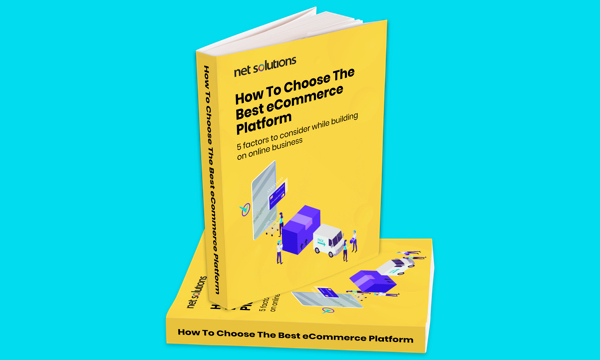Are you thinking about launching an eCommerce business this year? The potential rewards for entering this growing industry are vast, with worldwide eCommerce revenues expected to exceed $6 trillion soon, according to Forbes Advisor.
Of course, growing markets come with widespread competition, and assessing your potential for success requires a clear understanding of the expenses of running an eCommerce website.
This blog post explores all the costs required to launch and operate a custom eCommerce website instead of using an out-of-the-box SaaS eCommerce platform like Shopify. We will also help you estimate expenses and profit margins.
What Is a Custom eCommerce Website?
A custom eCommerce website is a specially designed eCommerce store, usually built on a powerful Content Management System (CMS) like Magento. A custom eCommerce site gives you tremendous flexibility to create your desired customer experience.
When launching a custom eCommerce store, you will either pay an in-house design and development team to create it or outsource the project to a development agency.
Additionally, you could hire an outsourcing partner to collaborate with your in-house team, filling in the gaps where your team needs more capacity or expertise.
Custom eCommerce website design and development allows you to create custom features and continually adjust the User Experience (UX) to optimize conversions.
Key Costs for an eCommerce Website
If you’re considering stepping beyond the confines of SaaS eCommerce platforms, you’re almost certainly interested in estimating the costs involved. That way, you can set a reasonable, informed budget.
While eCommerce website development costs vary from one development company to the next, it’s possible to identify a range of costs for each component—not just for development but for everything else involved in running an eCommerce store.
The following products and services factor into the total cost of running a custom eCommerce website—going beyond the upfront cost of building the website.
Domain name registry
A domain name is essential to your branding, so you’ll want to choose something catchy and memorable. It’s that search for the perfect domain name that can make the costs challenging to pinpoint.
While you can find a great name at the base price of around $15 per year on a domain registry service like GoDaddy, you may want to spring for a (more expensive) premium domain name.
There are also domain names that others have purchased, betting on the idea that someone would launch a business and attempt to buy them.
The most expensive domain name ever sold was Cars.com, which cost $872 million. Yes, that’s U.S. dollars! Setting aside the crazy outliers, however, you can find a good domain name for roughly $15 – $80 per year.
Price range: $15 – $80 per year
Hosting
Web hosting costs are directly tied to the traffic you need to accommodate. Depending on your business needs, you might pay anywhere from $10 to $1,000+ monthly for a self-hosted site.
Remember, however, that those upper-echelon fees will only appear when you have massive traffic volumes. If you’re getting that kind of traffic, you’re probably doing great business at that point.
Also, be aware that while there are a lot of very inexpensive hosting providers out there, the cheap ones may crash frequently, and they probably can’t handle the spikes in traffic that come at peak times (e.g., during holiday sales).
The loss in business you’ll incur by going with a cheap web host will probably cost you far more than the money you’ll save, so we don’t recommend skimping on hosting.
Price range for hosting: $10 – $1,000+ (based on traffic)
Payment processing
Every online store requires payment processing, allowing customers to pay using a credit or debit card at checkout.
In some parts of the world, paying cash to a local minimart or another live vendor is possible. The customer then receives a voucher that confirms payment. However, that is only necessary if you serve markets in countries with low credit card use.
The company hosting your payment gateway might charge a monthly fee and a transaction fee based on a percentage of each transaction.
Your payment processing costs will increase as your sales increase—but that’s fine because your revenues are growing proportionally!
Fees will vary based on the type of payment used and the payment processor’s terms and conditions.
Price range: Monthly Fee (around $25 per month), with a transaction fee of around 2.9% + 30 cents per transaction
Custom eCommerce web design cost
Web design for eCommerce stores can be a crucial differentiator for those wanting to stand out.
Standard templates have a specific look and feel, and it may take a lot of work to make an accurate impression or carve out a unique brand when using off-the-shelf eCommerce software.
Custom-designed websites can integrate your brand and present a user interface that caters to your customers’ needs. Costs will vary considerably based on your business needs, with enterprise eCommerce sites costing much more to design.
Price range: $1,500 – $30,000+ (higher prices are for massive, enterprise-level retailers)
Website development
Web development costs for eCommerce sites will vary greatly depending on the number of features you require.
A simple WordPress site with a few eCommerce plugins, made from a simple template requiring minimal customization, will cost much less than a thoroughly customized website.
That’s why it’s best to chat with development partners and get quotes based on your needs, considering how much your business might grow and change.
Using an open-source platform like Magento, a skilled development partner can create a robust, powerful site like the one we made for 2XU, a successful Australian clothing reseller. SaaS eCommerce platforms like BigCommerce or Adobe Commerce Cloud have a much higher price tag. Still, they are hosted solutions and provide additional benefits for larger retailers and enterprise clients.
Price range: $2000-$9000 for a small website; $10,000-$35,000 for a Corporate Website; Anything between $5000 – $55000 for an eCommerce Website
Add-ons and extensions
Extensions allow you to do all sorts of things with a website that would cost a developer time and money.
For example, WooCommerce is an eCommerce extension that runs on WordPress, allowing anyone with a WordPress website to perform eCommerce functions, such as adding a shopping cart and interfacing with payment systems like Paypal and Stripe.
Within WooCommerce and other eCommerce extensions, thousands of plugins (also called Add-ons) enhance their functionality. Some of them are free; others cost money. The number of extensions and add-ons you might need and how much you will spend on each will depend on your business needs and website requirements.
Price range: Free – $300 per add-on
SSL Certificate
Have you ever visited a website that your browser warned you might not be “safe” to visit? That happens when a business owner forgets to update their SSL certificate (or never adds one in the first place).
The SSL certificate verifies the legitimacy of the website. That way, you know it’s not run by scammers using a fake address in some distant country, out of reach from your country’s law enforcement agencies.
Since you’re asking people to give you their credit card and banking information, purchasing an SSL certificate and keeping it up to date is essential. Otherwise, they won’t trust your business, and you’ll lose sales.
Price range: $10 – $200 per year
Copywriting & SEO
Don’t forget to consider copywriting and Search Engine Optimization (SEO) costs. Conversion copywriters understand human psychology and how to get shoppers to click that “buy” button.
Copywriting can vary considerably in price, but effective eCommerce copywriters (with a track record of helping clients improve conversions) will pay for themselves in the long run. They will make your product pages, and descriptions stand out, inspiring conversions.
Copywriting price range: $400 – $1,500 per page
SEO specialists: Varies considerably based on the tasks involved + the length of the agreement
How Long Does It Take to Develop an eCommerce Website?
While finalizing the eCommerce development services, you should know that the time it takes to build an online storefront, including design and back-end development, can vary from one website to the next.
Enterprise-level eCommerce websites usually take much longer to build than a small startup’s websites. The time it takes will also depend on the customization you require.
Also, if you need additional features to improve your eCommerce functionality, this will extend the time it takes to launch your eCommerce project.
We recommend contacting various outsourcing partners to get a price quote and a time estimate for custom development.
Total Cost of an eCommerce Website
Given any eCommerce site’s vast possibilities and individual requirements, listing a general range for the total costs wouldn’t be beneficial.
After all, a small business owner requiring a simple website for their online boutique will have very different business needs than an enterprise retailer like Walmart or Pottery Barn.
In addition to the cost of designing, developing, and maintaining an eCommerce website, you also have to consider average business costs, such as:
- Purchasing inventory
- Omni-channel marketing efforts
- Digital marketing (including email marketing and social media marketing)
- Conversion Rate Optimization efforts
- Advertising
- Labor
- Warehousing, shipping, and fulfillment
- Website maintenance and support
- Backups
- Security
- And more
Since there is so much variability in overall costs, we recommend contacting several web development companies and asking for a cost estimate. You can also create a Request for Proposal (RFP) outlining your needs and send it to different vendors.
Ready to Build Your eCommerce Website?
Net Solutions has been in the eCommerce design, development, and maintenance game since the industry’s conception.
Over the decades, we’ve built and maintained online stores for everyone from small startups to retail giants like American Golf and Euro Car Parts—helping them attract and convert online shoppers worldwide.
Frequently Asked Questions
1. Are there different pricing options or packages for eCommerce website development?
Different pricing options or packages for eCommerce website development are available, such as fixed-price, hourly rates, and project-based pricing. However, pricing varies depending on the eCommerce website development company you hire, the website’s complexity, the required features, and the level of customization you need.
2. Are there any hidden costs in setting up an eCommerce website?
Sometimes, some hidden costs could be involved in setting up an eCommerce website in the form of customer support fees, legal and compliance charges, security fees, and maintenance and updating charges.
3. How can I reduce the costs of my eCommerce website without compromising its quality?
- Plan and prioritize your website’s features and functionalities to ensure you don’t venture off-track.
- Choose a cost-effective eCommerce platform that aligns with your business goals. Open-source platforms like Magento or WooCommerce can be budget-friendly.
- Work closely with the design and development team to streamline the development process.
- Use ready-made themes and extensions, as creating them from scratch can be expensive and time-consuming.
- Outsource your eCommerce website to an agency from low labor cost regions to save hiring costs and other expenses.
4. How can I ensure a good return on investment (ROI) regarding eCommerce website costs?
- Optimize your website with compelling content to engage and convert customers.
- Optimize your website for search engines to improve the number of qualified leads.
- Create a user-centric website design to enhance customer satisfaction, encourage repeat visits, and boost conversions.
- Research your target market, competitors, and industry trends to understand and address customer pain points.










